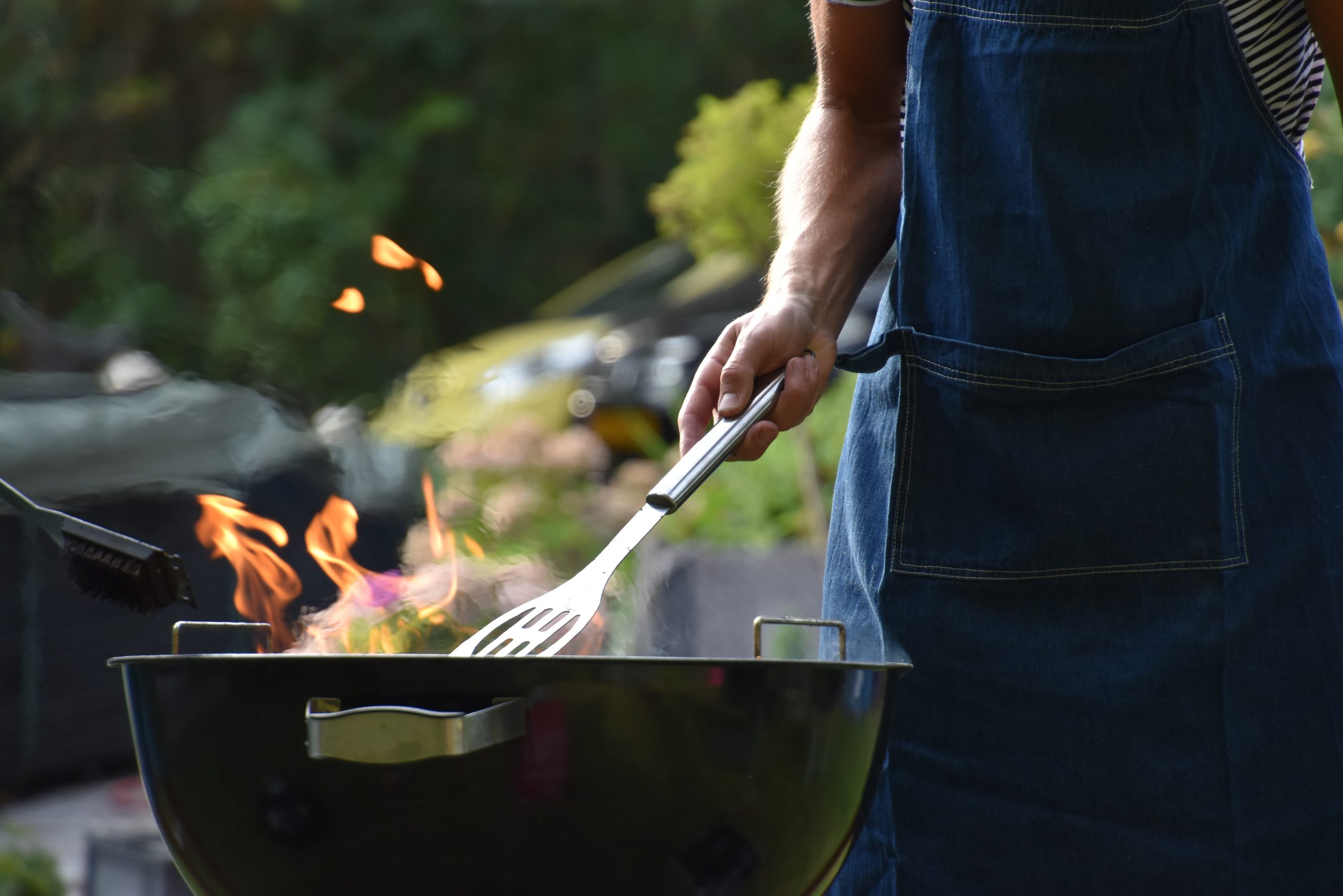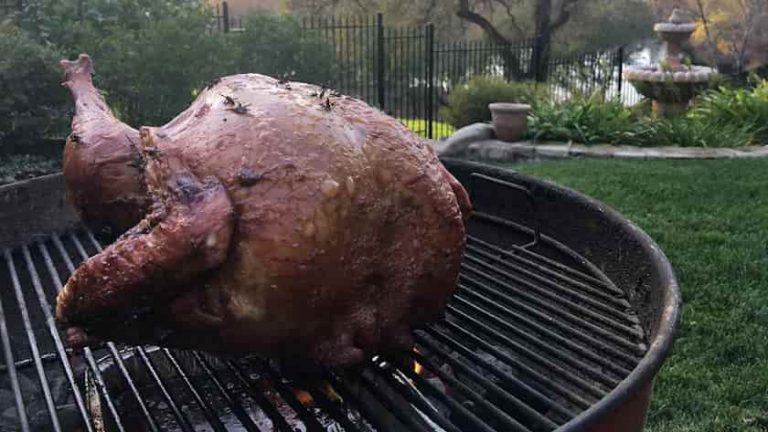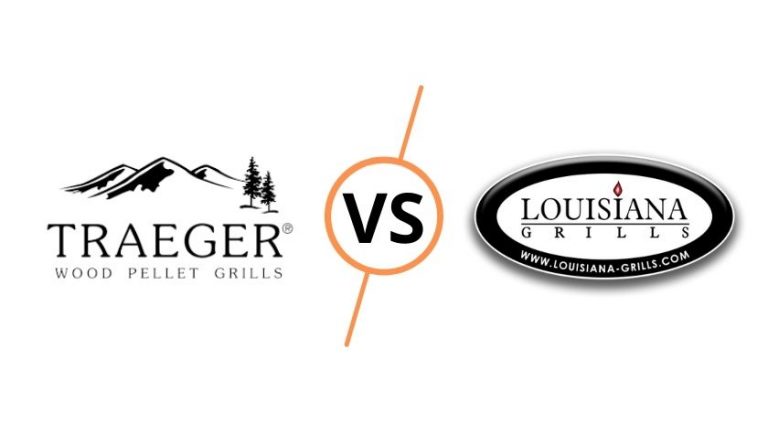How to Remove Bees Nest in Grill & Get Bees Out
As the aroma of sizzling barbecue wafted through the air, a peculiar dilemma befell a group of avid grill enthusiasts. Their joyful outdoor gathering was interrupted by a swarm of industrious bees that had taken residence in the grill, creating a buzzing conundrum. In the face of this unexpected encounter, they found themselves seeking a harmonious solution to help these tiny creatures reclaim their natural habitat.
Well, anyways, if you’re not a big fan of that story I just wrote, we should probably just get into the article itself. In this guide, we will give you all the practical tips you need in order to get rid of bees nest in grill.
Steps to Remove Bees Nest from a Grill
Removing a bee nest from a grill requires care and caution. Here are simple steps to take to safely remove the nest:
- Firstly, put on protective clothing including gloves and a mask to protect you from bee stings.
- Then, switch off the grill and detach the propane tank or gas line.
- After this, carefully remove the grates and any other parts that are easy to detach, then use a spray bottle filled with soapy water to spray the bees. This will cause them to become slower and weaker, making it easier for you to remove the nest.
Remember to use caution and avoid disturbing the bees unnecessarily. Once you have removed the nest and the bees, it’s important to clean the grill thoroughly to avoid attracting other pests.
It’s worth noting that bees are important pollinators and should be respected. If possible, consider contacting a professional to relocate the nest safely instead of removing it.
History has shown that failing to carry out proper removal of bee nests can lead to inconvenience and hazards. In some cases, bee infestations have led to dangerous stinging encounters with animals and human beings. Therefore, it is important to follow the recommended steps.
Honey, before you go removing that bee nest from the grill, make sure to suit up and follow these safety precautions.
Safety Precautions before Removal
It is imperative to take necessary safety measures before removing a beehive from a grill. The danger of being stung is high, causing possible allergic reactions and severe injuries.
Here’s how to take Safety Precautions before Removing the Hive:
- Wear protective clothing that covers your entire body, including a beekeeper veil, hat, gloves, and boots.
- Ensure that the area around the grill and hive are clear of any obstruction or materials that could complicate the removal process. A cluttered space not only makes removal difficult but also aggravates bees allowing them to become agitated.
- Use caution when approaching the hive; make sure you are within reach of any escape route should things get out of control. Additionally, use caution when handling tools around the hive as noise and vibration can stimulate the hornets or wasps in their nest.
In addition to these steps, it is crucial to conduct the removal process during day time when most bees are out foraging for nectar or pollen; this ensures fewer bees inside the nest making removal easier.
While taking safety measures is important for all bee removals, each instance can be different depending on factors such as size, location, types of bees; once while performing rescue operations we found a hidden honeybee swarm underneath our family’s old Weber grill that required additional care while removal.
Taking proper safety precautions before removing a beehive from your grill can make all difference in ensuring your safety. Stay alert and cautious throughout the task to avoid any accidents or injuries.
Finding the bees nest is like playing a game of hide-and-seek, but with added stingers and a lot less fun.
Identify the Location of the Bees Nest
To locate the bees nest within the grill, examine it closely for any signs of bees coming and going. Look for a small opening which the bees are using to enter and exit the grill. Once identified, avoid approaching the nest as honeybees are not fond of disturbance, and they may become defensive.
When identifying the location of the bees nest, ensure your safety by wearing protective gear like gloves, hats, and bee suits. Also, use a torch or flashlight to see dark corners of the grill where bees usually tend to build their hives.
If you find a large beehive in your grill with numerous bees present, do not attempt to get rid of it on your own but instead seek help from professional beekeepers or pest control services.
It is essential to note that honeybee colonies are vital pollinators of plants and trees globally. Therefore, it’s always best to consider humane options before destroying their habitat unnecessarily.
According to experts from The Honey Bee Conservancy, “Without honeybees and other pollinators like butterflies and insects, we would lose one-third of our food supply.”
Get your buzz on and suit up before taking on those angry bees, or you’ll end up looking like a honey-drizzled piñata.
Purchase Protective Clothing and Equipment
When it comes to safely removing a bees’ nest from your grill, acquiring the right protective clothing and equipment is essential. Proper attire will ensure you protect yourself from being stung by the bees. Here are several crucial points to keep in mind while selecting protective gear:
- Wear thick leather gloves to avoid bee stings on your hands.
- Put on a full-body suit that covers every part of your skin and prevents any openings. This suit consists of a hat with a veil, long sleeves, elastic band around the waist and ankles, etc.
- Ensure that you have bee smoker as it will disorient the bees inside the grill and prevent them from getting agitated while you are working.
Be sure to buy protective gear that suits all your requirements for this task. By doing this correctly, you can save yourself from potential harm.
It’s recommended not to use excessive force while cleaning a bees’ nest from the grill as aggressive action can provoke the bees further and put you at risk of being stung.
In some cases, people opt to call professional pest control services as it ensures safe removal without exposing anyone to harm.
Nothing says ‘buzz off’ to bees like a lethal dose of insecticide dust.
Use an Insecticide Dust to Kill the Bees
To eliminate bees from a grill, insecticide dust can be used to take care of the problem effectively. This is an efficient method for removing bees and their hives from your property.
Here is a simple three-step guide to using insecticide dust to eliminate bees:
- Locate the bees’ nesting area within the grill.
- Using protective gear such as gloves and goggles, apply the insecticide dust directly into the nesting area while holding your breath.
- Leave the area undisturbed for several hours so that the dust can take effect. Afterward, use a broom or vacuum cleaner to remove any remaining powder.
It’s crucial to avoid using water when trying to eradicate bees since this will only exacerbate their aggression. Also, ensure that there are no bee entry points on your grill or surrounding areas.
Lastly, Pro Tip: It’s critical to use caution when dealing with Bees and wasps as they can be deadly if provoked. Seek professional assistance if unsure of how to carry out such actions safely and legally.
Bees are like nosy neighbors, but with wings and a stinger.
Observe the Grill for a Few Days before Removing it
Observing a Grill for a Few Days before Removing its Bee Nest
It is advisable to analyze your grill thoroughly and observe it for several days before attempting to remove the bee nest. This allows you to make sure that you are dealing with bees rather than other pests or insects and understand their patterns of activity. Moreover, studying the structure aids in identifying access points and gauging potential risks.
Watch Out for the Bees’ Activity
Monitoring the bees’ movement over time is crucial since it provides insight into their behavior, entrance, and exit points. Constant surveillance helps measure whether they are dormant or active throughout a given period. Additionally, observing from afar ensures that you do not interfere with their smooth operation while also ensuring your safety during the removal process.
Eliminate Any Physical Threats
Before moving in on the beehive’s location, ensure that everything potentially harmful nearby is cleared out. This includes switching off the grill’s valves to avoid accidental ignition, putting on safety gear such as gloves and protective clothing, removing pets from the area, among others.
According to reliable sources such as “The American Bee Journal,” adult bees typically have an average lifespan of approximately five weeks during summer.
Say goodbye to your beloved grill, and hello to a bee-free backyard with this simple step – just remove the grill and seal off any entry points, because nobody wants their burgers with a side of stingers.
Remove the Grill and Seal Off any Entry Points
To safely remove a bees nest from your grill, it is essential to remove the grill and seal off any entry points. This step is crucial in preventing the bees from accessing the grill again and getting agitated. Here’s a 6-step guide to Remove the Grill and Seal Off any Entry Points:
- Turn off the gas or electricity supply to the grill.
- If possible, move the grill to an open area that isn’t heavily trafficked.
- Wear protective gear, including long sleeves, pants, gloves, and a beekeeping veil or hat.
- Check for any visible entry points on the grill and seal them with masking tape or caulk.
- Securely cover all other openings such as air vents with mesh screens
- Double-check that there are no gaps where the bees can enter before removing their nest.
Remember, bees can get aggressive if their colony is disturbed. It’s best to contact a professional exterminator if you’re unsure how to tackle this task. Pro Tip: If you plan on using the grill again soon after removing the bees nest, clean it thoroughly before doing so. The scent of honey can attract new colonies of bees looking for a new home. Don’t worry, disposing of the nest won’t make you a buzz-killer, but cleaning the grill thoroughly might sting a little.
Dispose the Nest and Clean the Grill Thoroughly
Once you have successfully removed the bees nest from your grill, it is essential to dispose of it safely and clean the grill thoroughly to prevent future infestations.
- Using protective clothing and gloves, carefully remove the bees nest from your grill.
- Dispose of the nest in a sealed plastic bag or container and place it in a secure trash bin.
- Use a soap and water solution to wash down the grill grates, using a wire brush if necessary.
- Cleanse the entire area surrounding your grill including any surfaces where bees may have left traces of their presence.
- Rinse off with clean water before drying completely.
Remember that neglecting to carry out these crucial steps can attract other pests and insects that are drawn to the scent of honey comb residues left behind.
It is crucial to ensure that all surfaces near the grill are also thoroughly cleaned, including outdoor furniture and surroundings. Failure to do this could prove detrimental by attracting more bees or other insects.
Don’t let infestations go unchecked as they pose harmful risks to you, your family members, and pets alike. Make sure you take timely action if you notice any signs of an infestation.
Make your grill less inviting to bees with a sign that reads ‘No Vacancy: Fully Booked with Delicious Meats, Sorry Bees!‘
Preventing Bees from Nesting in the Grill in the Future
Preventing future nesting of bees in the grill is crucial for maintaining a safe and peaceful environment in your backyard. Instead of dealing with the hassle of removing bees, follow these three simple steps:
- Firstly, keep your grill clean and free of leftover food and debris.
- Secondly, ensure that the grill is properly covered after use,
- and lastly, consider planting bee-repelling plants around the grill area.
Remember, a little prevention goes a long way in ensuring a bee-free grill experience.
Remember, prevention is better than cure! Don’t wait for bees to make a nest in your grill. Take proactive steps today, and you will never regret it. Remember the feeling of waking up to a backyard full of bees? You don’t want to go through that again. Take action today to maintain a peaceful and bee-free backyard.
Keeping your grill clean is important, unless you want to add ‘bees’ to your list of marinade ingredients.
Regular Cleaning and Maintenance of the Grill
Maintaining and Cleaning the Grill to Prevent Bees from Nesting
To prevent bees from nesting in your grill, it’s necessary to keep it clean and well-maintained. This will not only ensure a safe environment but also help in preserving the longevity of the grill.
Below is a 4-Step guide for maintaining and cleaning the grill:
- Start by turning off the gas supply, letting the grill cool down.
- Brush off any excess grime or debris with a stainless steel brush.
- Clean the grates with hot soapy water or by using a non-toxic cleaner. Scrub them thoroughly until all residue is removed.
- Inspect all parts of the grill for rust or damage, replace if necessary, and store in a dry place.
Cleaning the grills regularly can reduce bees’ attraction to your outdoor space while preventing oxidation and rust build-up.
Be sure to schedule regular deep cleaning appointments every three months to keep your grill in good shape. This ensures that all burners are performing optimally leading to easy ignition.
It’s important to note that soap-based cleaners should be rinsed away entirely, leaving no residues as they might contaminate food.
Here’s an essential trick: Applying some cooking oil after cleaning can prevent future oxidation and make cleaning easier next time!
Keeping your grill clean also means keeping you and your loved ones healthy while enjoying tasty grilled meals outdoors.
Protect your grill like you protect your ex’s number, cover it up when you’re not using it.
Cover the Grill when Not in Use
To prevent bees from nesting in your grill, ensure that the grill is properly covered when not in use. This will help keep bees and other pests away from the grill area.
Here is a simple 3-step guide on how to cover your grill:
- Wait until the grill is completely cool before covering it.
- Clean and dry the exterior of the grill to prevent moisture buildup.
- Use a sturdy, weather-resistant cover that fits snugly over the grill to keep pests out.
In addition, it’s important to note that regular cleaning and maintenance of your grill can also help discourage bees from nesting. It’s best to clean your grill after each use and remove any debris or food particles.
By taking these preventative measures, you can enjoy grilling without the fear of bees nesting in your equipment and potentially causing harm.
Don’t let a bee infestation ruin your grilling experience. Take action by covering your grill when not in use and keeping it clean. Your outdoor cooking space will be safer and more enjoyable for you and your loved ones.
Who needs a guard dog when you can have a bee deterrent? It’s like a moat, but for your grill.
Install a Bee Deterrent in the Surrounding Area
Bee Repellent Strategies for Deterring Bees from Nesting in the Grill’s Surrounding Area
To prevent bees from nesting around your grill area, you can install a bee deterrent that will keep them at bay. Knowing how to use different bee repellents can be an effective way of deterrence.
Here are 6 steps to help you install a bee deterrent effectively:
- Determine the type of deterrence needed based on the severity of bee presence and disposition
- Use natural remedies like peppermint oil around the grill area as this is known to drive away bees and other insects
- Install hanging traps or decoys made with dimpled plastic bottles coated with a sticky substance, which confuses bees and deters them from nesting in that particular area
- Turn off porch lights at night because bees are attracted to bright lights; turn on dimmer or yellow light bulbs when possible
- Keep trash cans clean and covered to prevent bees from gathering around them, which could increase the risk of sting incidents
- Educate your family members about safe bee practices such as avoiding swatting at bees, not leaving uneaten food out, or wearing perfume/sweet smelling lotions outdoors
To maximize protection against bee nests around grilling areas, it is useful to know that some deterrents need reapplication frequently. Furthermore, take extra steps to practice caution when eating outdoors. Use proper covers over food containers so as to not attract insects.
A study by Science Daily reports that increases in global temperature have led more people exposed to insect stings each year (source: Science Daily) .
A colony of bees in your grill may sound sweet, but seeking professional help is key before things turn sour.
Seek Professional Help if Infestation Persists
When bee infestations in the grill persist even after following preventions, seeking professional help is recommended. Professional pest control service providers can effectively eliminate bees from your grill while ensuring their safety. It’s important to note that the infestation in the grill may be an indication of other issues around your home that a professional can assess and fix.
Dealing with bee infestations in the grill can be daunting. However, it’s crucial to consider calling for professional assistance if preventative methods don’t work. The primary advantage of hiring a pest control service provider is that they have access to safe and effective pesticides, equipment and protective gear needed to handle bee infestations safely.
Aside from eliminating bees from your grill, pest control professionals can also offer added tips on preventing future re-infestation. This includes sealing gaps that allow bees entry into your home or using repellents that prevent their presence from causing further damage.
Some homeowners have shared how infestations persisted despite implementing measures outlined online—to no avail. “A client had tried various recipes he found on the internet but ultimately decided to enlist a professional termites expert who solved his termite problem once and for all.” Seeking help from professionals doesn’t only ensure getting rid of bees but also avoids wasting time trying ineffective methods.
I may have prevented bees from nesting in my grill, but now I have a whole new set of problems with my vegan friends.
Conclusion
Removing a bee nest from your grill can be challenging. First, ensure that you are doing it safely by using protective clothing and following instructions carefully.
- Remove the nest when bees are not active to avoid getting stung.
- Use insecticide spray or soapy water to exterminate bees if needed.
- Lastly, clean the grill with soap and water to minimize the risk of future bee infestations.
Additionally, remember to inspect your grill regularly for any signs of activity by bees as prevention is always better than cure. By keeping your grill clean and well-maintained, you can prevent bees from nesting in the first place.
Pro Tip: Consider hiring a professional if the nest is too large or if you have an allergy to bee stings.
Frequently Asked Questions
Q: What should I do if I find bees in my grill?
A: The best thing to do is to call a professional bee removal service to safely relocate the bees and remove the hive.
Q: Can I remove the bees myself?
A: It is not recommended to remove bees yourself, as it can be dangerous and cause harm to both you and the bees.
Q: How can I prevent bees from nesting in my grill?
A: You can prevent bees from nesting in your grill by keeping it clean and covered when not in use, as well as sealing any gaps or openings in the grill.
Q: Are all bees dangerous?
A: No, not all bees are dangerous. Many species of bees are important pollinators and pose little threat to humans.
Q: Will removing the hive harm the bees?
A: If done correctly by a professional bee removal service, the bees can be safely relocated with minimal harm to the hive and its inhabitants.
Q: How much does bee removal cost?
A: The cost of bee removal varies depending on the location and size of the hive, but it typically ranges from $100 to $500.






